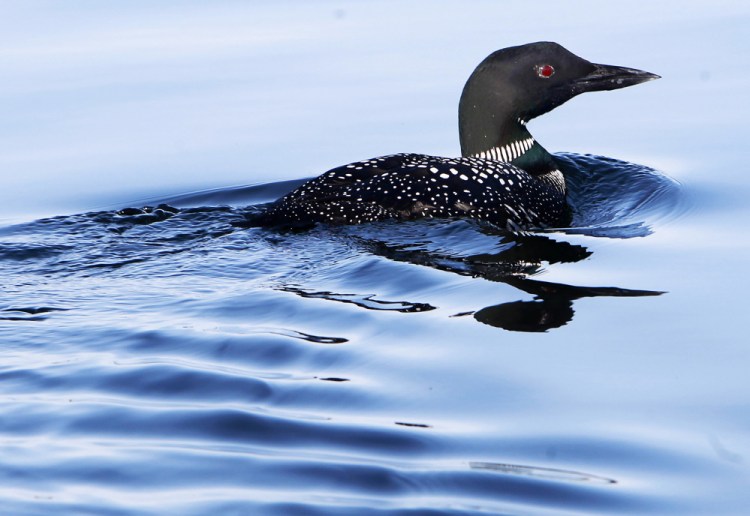CONCORD, N.H. — More than year after New Hampshire passed one of the nation’s toughest bans on using lead fishing tackle, loons are still dying from ingesting fishing weights and lures.
The 2016 law prohibits the sale and use of lead tackle in the state as part of an effort to revive the state’s loon population. But Loon Preservation Committee senior biologist Harry Vogel says eight loons have died this year from lead poisoning, up from two last year.
“The day this law was passed, we knew we would continue to see lead-poisoned loons,” Vogel said. “As long as Grandpa’s old tackle box is in the dusty corner of the garage, some people will just put lead tackle on the line and continue to fish. The hope is that it will become less and less common over time.”
Loons are aquatic birds that dive for their food, and they can become poisoned by consuming lead tackle in fish. The common loon population nationwide is relatively healthy at around 14,000 pairs in 14 states. But several states, including New Hampshire, have struggled to grow their numbers. There are only 300 breeding pairs in the state – up from 204 pairs a decade ago – and lead poisoning has been blamed on stunting their recovery.
A paper out earlier this year in the peer-reviewed Journal of Wildlife Management found that lead fishing tackle was the leading cause of death in New Hampshire loons. Of the 253 loons that died from 1989 to 2012, the study found that nearly 49 percent died from ingesting lead tackle. That was more than all other causes of death and six times the next highest cause of death which was listed as trauma.
“We were flabbergasted. Nobody ever anticipated that it was having that effect,” said Mark Pokras, a wildlife veterinarian at Tufts University who was a co-author on the paper with Vogel and others and has studied the problem of lead in loons for 30 years. “This one material is killing enough loons so that it is decreasing the population,” he said.
Legislation is one of the best ways to help the loons and states in the Northeast have led the way. New Hampshire, Vermont, Massachusetts, New York and, most recently, Maine have passed or amended laws that limit or outright ban lead in fishing gear. Other states like Minnesota only have education programs for anglers.
Maine first banned lead sinkers in 2002 and strengthened the law in September. As a result, adult loon mortality from lead poisoning has dipped from more than 30 percent from 1987 to 2001 to less than 20 percent from 2013 to 2016, according to a data from the Tufts Wildlife Clinic and the Biodiversity Research Institute.
In the final days of President Barack Obama’s administration, the U.S. Fish and Wildlife Service issued an order phasing out the use of lead ammunition and fishing tackle on national wildlife refuges by 2022. But in March Interior Secretary Zinke signed an order revoking it, saying stakeholders had not significantly consulted.
“One of the issues is that a lot of serious anglers do a lot of traveling to fish,” Pokras said. “It would be very easy to be in Connecticut, New Jersey and other states and fill my tackle box with lead fishing gear. They are not going to have a special New Hampshire tackle box.”
While the lead poisoning deaths are up in New Hampshire, Vogel and other supporters of the law said it is changing attitudes among anglers.
They noted the fishing community is on board with the new regulations and that bait shops across the Granite State have complied with the ban. The state Fish and Game Department put up posters promoting the ban, highlights the issue in its fishing classes and offers tips on fishing lead-free on its website.
Associated Press reporter Patrick Whittle in Portland contributed to this story.
Send questions/comments to the editors.


